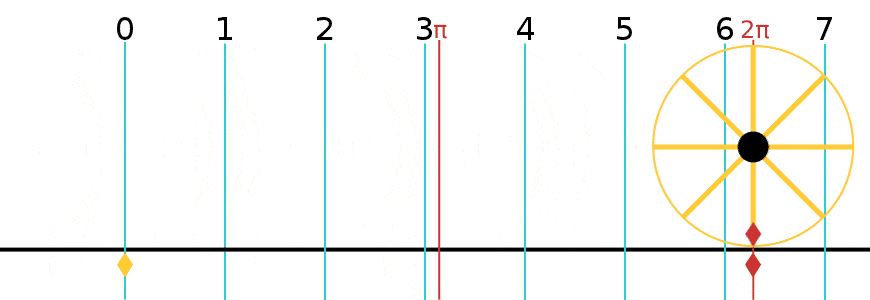Pi's not just for circles. It's in springs and atoms and light
With certainty, pi's everywhere.
Icons8
When I started studying to become a particle physicist, I noticed that π appeared not only in math courses, but also in almost every subject covered in each physics class. From the coil of a spring to the properties of light, pi shows up again and again, no matter what. To celebrate Pi Day, I want to take you on a brief quantum journey.
In the early 1900’s, quantum mechanics was arising as a way to explain the mysterious behavior of elementary particles, such as photons and electrons. That's when researchers came up with the concept of wave–particle duality, the idea that particles could behave as both indivisible pieces of matter and astonishingly, as waves. A fundamental fact of nature.
A wave can be thought of as a repeating oscillation. Picture a clock. Every 60 seconds, the hands complete a revolution and covers a 360 degree angle, or, in units of radians, 2π.

A circle with radius of 1 makes a single complete revolution equal to 2π.
Ufo Karadagli via Wikimedia Commons
The period of the rotation would then be 60 seconds, and the angular frequency, corresponding to the angular displacement per unit time, would be 2π divided by 60 seconds. So, even if the clock’s hands are following a circular path, their movement can be described by a wave.
Elementary particles like electrons, photons, and quarks have all the properties of waves, like wavelengths and angular frequencies. It is natural to find the number pi in many equations within the quantum mechanics framework that describe the behavior of these particles.
The Heinsenberg uncertainty principle is a beautiful example of the consequences of the particles' wave-like nature. It essentially states the curious fact that we can't simultaneously measure both the position and velocity of a particle . The more accurate the measurement of either of the two variables is, the more uncertain the other one gets. In fact, exact position and velocity have no meaning at all in the quantum realm. Although the implications of this principle are extremely complex, the equation that describes it is a very simple one that depends, you guessed it, on π.
From the circumference of a circle to quantum mechanics, pi plays a crucial role in our understanding of nature.